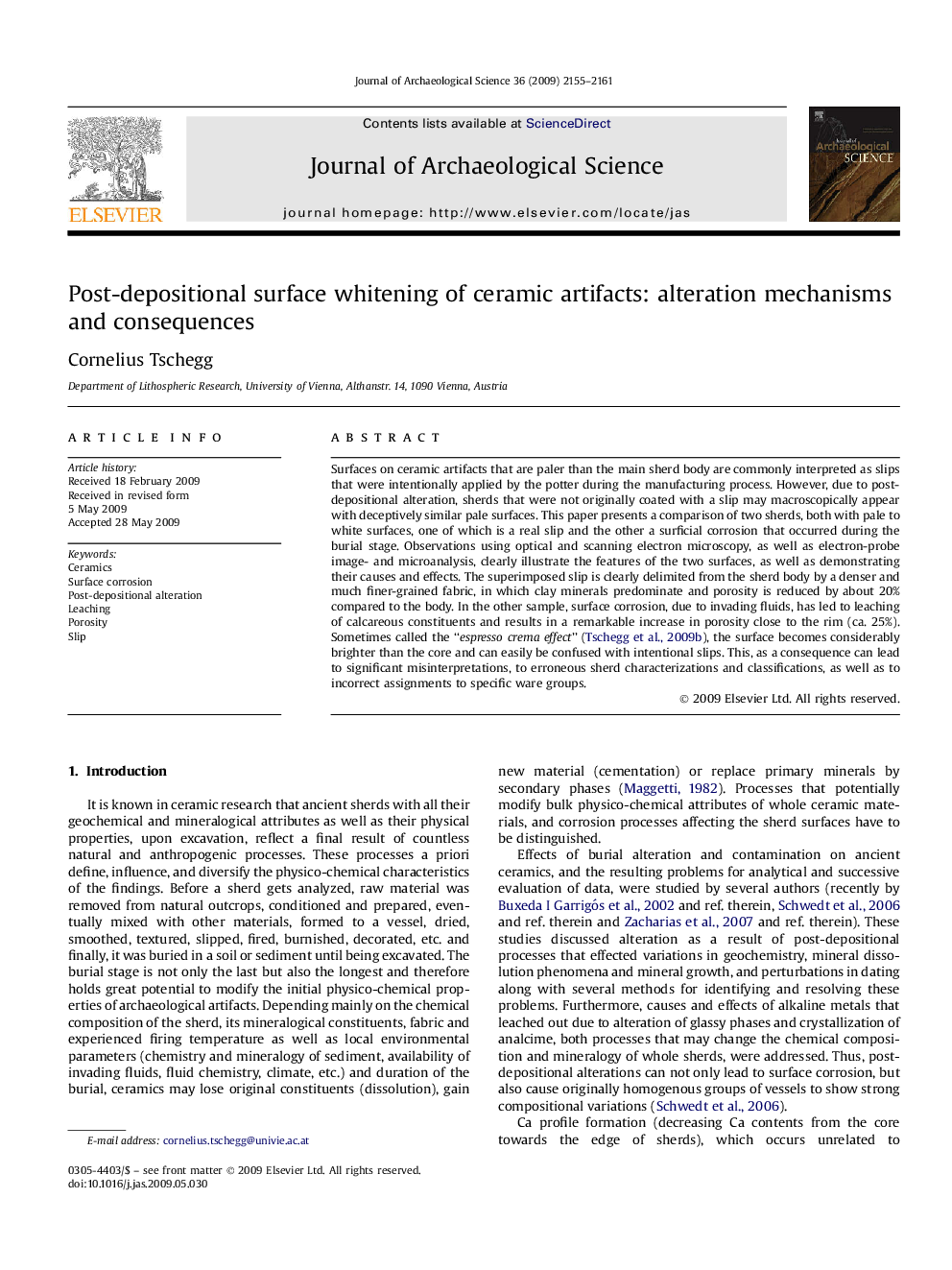| Article ID | Journal | Published Year | Pages | File Type |
|---|---|---|---|---|
| 1036387 | Journal of Archaeological Science | 2009 | 7 Pages |
Surfaces on ceramic artifacts that are paler than the main sherd body are commonly interpreted as slips that were intentionally applied by the potter during the manufacturing process. However, due to post-depositional alteration, sherds that were not originally coated with a slip may macroscopically appear with deceptively similar pale surfaces. This paper presents a comparison of two sherds, both with pale to white surfaces, one of which is a real slip and the other a surficial corrosion that occurred during the burial stage. Observations using optical and scanning electron microscopy, as well as electron-probe image- and microanalysis, clearly illustrate the features of the two surfaces, as well as demonstrating their causes and effects. The superimposed slip is clearly delimited from the sherd body by a denser and much finer-grained fabric, in which clay minerals predominate and porosity is reduced by about 20% compared to the body. In the other sample, surface corrosion, due to invading fluids, has led to leaching of calcareous constituents and results in a remarkable increase in porosity close to the rim (ca. 25%). Sometimes called the “espresso crema effect” ( Tschegg et al., 2009b), the surface becomes considerably brighter than the core and can easily be confused with intentional slips. This, as a consequence can lead to significant misinterpretations, to erroneous sherd characterizations and classifications, as well as to incorrect assignments to specific ware groups.
